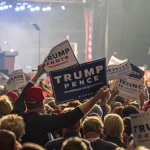The “Magnificent Seven” stocks have led the market’s recovery over the past month. This marks a shift from earlier in the year when “old economy” stocks like financials and healthcare led, while tech fell out of favor. Since bottoming out on April 8, the day before President Donald Trump announced a 90-day pause on many of his new tariffs, stocks have climbed nearly 14%.
The tech sector has climbed nearly 20% and has been the largest contributor to the market’s total return. The five largest individual contributors to the market’s total return were Microsoft, Broadcom, and Meta Platforms. Besides Broadcom, these are all members of the Magnificent Seven.
The remaining three members—Amazon, Alphabet, and Tesla—were not far behind. Strategists say there are valid reasons for the bounce.
Market lift from tech rebound
The largest tech players have structural advantages that make them attractive during volatile moments, explains Todd Ahlsten, chief investment officer at Parnassus Investments. “It’s not overly surprising that if the market is going to snap back, investors are going to look to those companies that are in very good positions, that are going to grow earnings, have low debt … and are part of a secular tailwind [of artificial intelligence],” Ahlsten says. Most of the Magnificent Seven stocks were already strong even before the tariff selloff.
Firms like Microsoft and Apple delivered strong earnings results for the first quarter and relatively positive guidance for the year ahead, even amid an uncertain trade landscape. Mark Hackett, chief market strategist at Nationwide, expects that this tech-driven phenomenon may fade in the coming months. “Once you get through this emotionally driven market, you start going back to the fundamentals,” he says.
He adds that many challenges facing big tech heading into the year remain, such as pressure on valuations and a narrowing gap between big tech and the rest of the market. He anticipates that investors will return to trades that worked in the first three months, like value, quality, and international markets, once the dust settles, though it could be a few months before that happens. With more turbulence potentially on the horizon, chief US market strategist Dave Sekera recommends investors overweight value stocks, which are trading at a discount, and underweight growth stocks, which are still trading at a premium.







